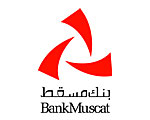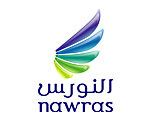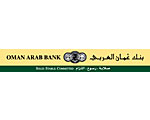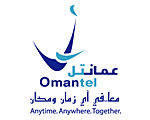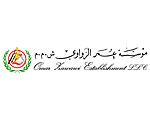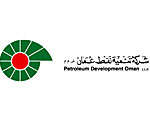Gus Freeman is MD, Arabian Research Bureau – www.arabianresearch.com


In this article we look at how a PDA mounted application is playing a key role in managing service performance for passengers at Seeb International Airport. Oman Airports Management Company (OAMC), under the Ministry of Transport and Communications, is responsible for managing the airport at Seeb. Apart from the expansion of the existing terminal and plans for building the new terminal, a major priority for OAMC and the government is to improve service performance for air travelers. This is a key requirement for residents traveling to and from home in the Sultanate, as well as visitors to Oman, especially given the current effort on marketing the Sultanate as a tourist destination.
OAMC is committed to improving service levels for passengers. It understands that passenger expectations do not stand still, but are always increasing as travelers get used to certain service levels. Accordingly they need to seek continuous improvement.
OAMC have recognized that they cannot manage effectively what they do not measure. The first step in improving service levels was for them to measure them. They identified the following key services for measurement:
- Queuing time and length of transaction at check in;
- Queuing time and length of transaction for transfer passengers; and
- How long it takes to get the luggage from the aircraft upon arrival to the carousel.
They commissioned Premier Associates LLC and their survey specialists Arabian Research Bureau LLC (ARB) to design, build and operate an airport service monitoring system, which began operations in December 2004. Every month throughout 2005 enumerators are making 1,000 measurements containing 27,500 bits of data. These get processed and analysed to establish what percentage of measurements for each service are within a certain time standard. Data are collected on the likely reasons for any measurement being above the time standard, going some way towards diagnosis. The results are written up and reported to OAMC on a quarterly basis, providing the management with the information to improve service levels.
From the outset, PDAs were the clear technology choice to carry out the data collection. ARB, based at Knowledge Oasis Muscat (KOM), went to one of their technology partners R&D, also part of the KOM community, for them to develop an application to launch the data collection forms on the PDA.
Using Microsoft’s Windows Mobile operating system on a high performance PDA, R&D opted to build a bespoke application rather than simply converting the paper version of the data entry form into an electronic one. Given the decline in the cost of Windows based PDAs, bringing them closer in price to the lower cost Palm OS; and given that it is more cost effective to program in the .NET framework than Palm OS; R&D selected Microsoft technology.
The application has a separate data entry form for each of the three areas of check in, transfers and arrivals as the processes in each differ and therefore so must the data collection. These can be selected through an opening screen.
Each form has a main page where basic information about the area of work, the shift, the time and the name of the enumerator are entered, and then there is a page for every record. Many records can be kept open at once as enumerators monitor several events at any one time. “The application makes use of the time stamp,” reported Mohammed Al Rasbi, CEO of R&D, “to record the time when an event started or finished, such as the time a passenger started queuing, or the time the first bag reached the carousel from a flight arriving.” The duration of an activity is calculated automatically as the difference between start and finish times. “This is then automatically compared with a time standard,” continued Al Rasbi. “If the duration is longer than the time standard, the enumerator is prompted to give reasons for this.”
Using the PDA Mounted Application
Whilst the application was being developed and tested, the first data collection cycle was implemented using hard copy data entry forms. This experience has highlighted the benefits of using the application with the PDAs in the project, namely that it is:
- Faster;
- Cheaper; and
- Produces better quality data.
Ahmed Al Riyami, Operations Manager at ARB said: “Using hard copy technology, once the data were collected they had to be transferred from paper to electronic format for processing and analysis. This required about 10 person days of data entry, which had to be checked adding more time.” Al Riyami continued, “With the PDAs the data are entered at the point of collection, immediately saving those person days on data entry. The data still need checking, but the process is quicker because their quality is better.”
This time saving can translate into a significant cost reduction when the measurement process is being repeated often.
“Using hard copy technology, enumerators were using watches and recording start and finish times, then having to make the calculations with mental arithmetic and next compare it with a time standard,” said Al Riyami. “At peak times, activity at the airport can be busy and noisy. Enumerators were simply not able to make all these calculations and identify whether the duration had gone over a time standard or not,” lamented Al Riyami. “The result was many missing data, with as little as 30% of below standard cases having reasons given for them. These figures have gone up to above 90% with the use of the application on the PDA,” Al Riyami concluded.
The fact that the data collected are instantly electronic means that quantity and quality metrics can be calculated at the end of a shift providing timely management information to the operations manager. Using the same principle that what you do not measure you cannot effectively manage, the manager can check whether the correct number of measurements have been taken according to the survey design. In order to get representative and comparable measurements over time, the design determines how many measurements should be made at peak and off-peak times, on certain days and for certain flights.
Equally, the number of measurements with missing data can be monitored and if it rises above an acceptable limit, records can be deleted and new ones collected. Using the application on the PDAs allows these quality systems to be implemented easily, leading to a higher quality more efficiently run measurement exercise.


